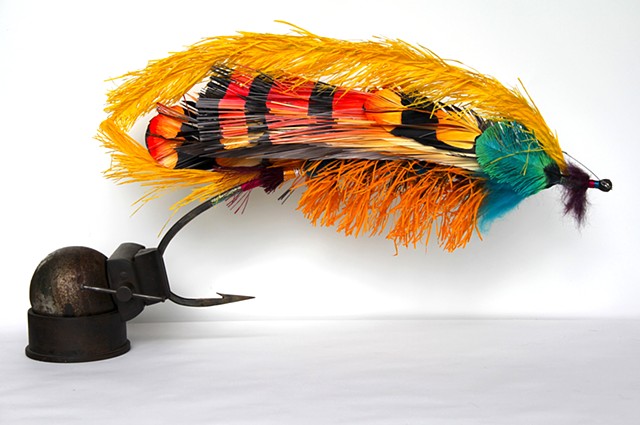Belonging
Ensnared
There is a dark side to our relationship with material objects, and you don’t need to look far to find it. The trappings of success can be an obsessive lure, ensnaring not only the people who possess them but also innocent occupants of pretty feathers and fur, not to mention fish. One example of this is the resurgence of the Victorian art of salmon fly-tying. In his book "The Feather Thief," Kirk Wallace Johnson chronicles the bizarre true crime tale of the natural history heist of the century and illustrates what it is to be completely overcome with possessing objects of beauty.
“…his analytical diagram of the fly reveals 19 different components, to say nothing of the various styles and curvatures of the hook. To tie like Kelson, his readers would need a silver monkey, a gray squirrel, pig's wool, silk from the Orient, fur from the Arctic, a hare's face, and a goat's beard… The Durham Ranger, introduced in the 1840s by Mr. William Henderson of Durham, England, demanded the crest feathers of the Golden pheasant from the mountain forests of China. Black and fiery orange breast feathers from the red-ruffed fruit crow, known to fly tiers as Indian Crow of South America. Ribbon-like filaments of ostrich herl feathers from South Africa, and tiny turquoise plumes from the blue chatterer of the lowlands of Central America. The fly was like a snapshot of the British Empire at mid-century, employing plumes shipped up by ostrich farmers in the Cape colony, blue chatterer, and Indian crow extracted from British Ghana, and golden pheasant crated in the Port of Hong Kong….” (Wallace Johnson, Kirk. "The Feather Thief." Random House, 2018)
